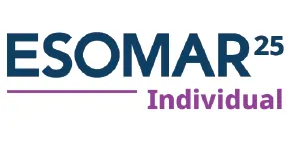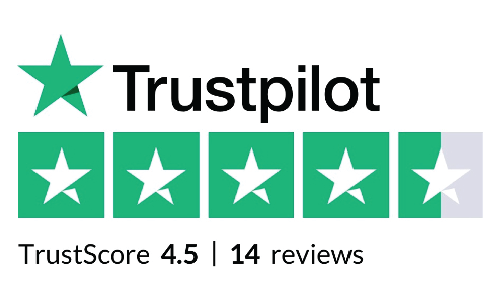
Snakebite envenoming that surpasses is a neglected tropical disease (NTD) that has a major impact on rural communities worldwide. Although they are healing, many areas, especially in countries with low incomes, face significant challenges in reaching life-player antivenins. Since the number of hose occurrences continues to increase, especially in areas affected by climate change and agricultural activities, antivenin companies face increasing pressure to adopt the strategies. The global distribution of antivenin is a continuous challenge, often interrupted by logistical problems, high costs, and inconsistent supply chains.
One of the primary obstacles to the treatment of effective hose is the availability of antivenin. Rural areas, especially Africa south of the Sahara, Asia, and parts of Latin America, are experiencing delays in receiving treatment due to poor infrastructure, such as insufficient road networks and lack of emergency transport. In addition, many of these fields suffer from a lack of health facilities equipped with the resources required to effectively manage snake bites. To combat these challenges, the Antenna companies are looking for innovative solutions quickly to improve the global distribution network, ensuring that Snakebite victims receive timely care.
Global Anthevanam Distribution: Cheap solution for weaker population
An important challenge that snakebite victims face is the high cost of anti-venom, which may be prohibitive for individuals in low-income societies. In many countries, the cost of treatment can exceed the average domestic income, forcing victims to seek alternatives such as traditional treatments, which are often ineffective and dangerous. Recognizing this, leading anti-venom companies have partnered with governments, non-governmental organizations (NGOs), and international health agencies to make anti-venoms more affordable and accessible. By implementing grants, price reductions, and wholesale purchase strategies, these partnerships aim to reduce the financial burden on patients and ensure a stable supply of anti-venoms. Companies like Serum Institute of India (SII) and Bharat Serums and Vaccines (BSV) have been at the forefront of these efforts, demonstrating how leading companies can have a profound impact on improving access to life-saving treatments for vulnerable populations.
In addition, innovative business models, such as local production, cost, and availability of antigens, appear as a possible solution to solve problems. In areas where hoses are widespread, establishing local production facilities can reduce the dependence on imported antivenin and lower costs related to transport and distribution. Public-Private Partnership also plays an important role in increasing antivenin production and distribution, which is important to respond to the increasing burden of snakes' increasing load in rural areas.
Global Antivenom Distribution: Collaboration to Strengthen Healthcare Systems
Global Antivenom Distribution: Collaboration to Strengthen Healthcare Systems
While anti-venom companies are working to overcome logistical and cost-related barriers, they also recognize the importance of strengthening healthcare systems to ensure effective snakebite management. Many rural health facilities lack trained personnel, proper equipment, and the necessary infrastructure to administer anti-venom effectively. This is compounded by the fact that many snakebite victims in these areas are often treated with traditional remedies, which delay access to medical care and exacerbate the effects of envenoming. Recent developments in healthcare initiatives, such as mobile clinics and telemedicine platforms, have begun to address these gaps by providing remote support and education to healthcare workers in rural regions. Additionally, training programs and partnerships with local healthcare providers are improving the capacity of rural health facilities to deliver timely and effective treatments. These advancements are making a significant impact by increasing access to life-saving care and reducing the risks associated with snakebite envenomations, particularly in underserved areas.
To address these gaps, antivenin companies are collaborating with governments and healthcare organizations to provide training programs for healthcare workers. These initiatives focus on improving the knowledge and skills of local medical professionals in managing snakebites, including the proper use of antivenom. Additionally, community health education campaigns are being implemented to raise awareness about the dangers of snakebites and the importance of seeking timely medical attention. By empowering healthcare systems and educating local populations, antivenom companies are helping to create an environment where snakebite victims are more likely to receive appropriate care.
Global Antivenom Distribution: Addressing Geographic and Species-Specific Needs
Global Antivenom Distribution: Addressing Geographic and Species-Specific Needs
Another challenge in the global distribution of anti-venom is the diversity of snake species and the variation in venom compositions. In many regions, multiple snake species contribute to the snakebite burden, each requiring different anti-venoms for effective treatment. However, anti-venom products are often generalized and may not be tailored to the specific needs of local populations. This has led to situations where anti-venoms are either ineffective or cause adverse reactions, further complicating treatment efforts. Innovative technologies and research are addressing this challenge by focusing on the development of more targeted, species-specific anti-venoms. Advances in genomics and proteomics have enabled researchers to better understand the genetic makeup of venomous snakes and the specific toxins they produce. This has led to the creation of more precise anti-venom formulations that can target multiple venom components simultaneously, increasing the efficacy of treatment and reducing the risk of adverse reactions. These innovations are transforming the landscape of snakebite treatment, ensuring that anti-venoms are more effective, safer, and better suited to the diverse needs of global populations.
To better address these geographic and species-specific needs, antivenom companies are focusing on research and development to create more targeted antivenoms. This includes developing polyvalent antivenoms that can treat multiple snake species and exploring the potential of recombinant technology to produce more efficient and specific treatments. Additionally, ongoing research into the epidemiology of snakebites is helping to identify the most common venomous species in different regions, allowing for more strategic deployment of antivenom resources.
According to Coherent Market Insights (CMI), the global Anti Venom Industry size is set to reach US$2495.7 million in 2032. Global Anti Venom Industry will likely increase at a CAGR of 8.8% during the forecast period.
A Collaborative Path Forward
The global challenges faced by antivenom companies in the fight against snakebite envenoming are multifaceted, involving logistical, financial, and healthcare system barriers. However, through collaboration between governments, healthcare organizations, and antivenom producers, solutions are emerging to improve the accessibility, affordability, and efficacy of snakebite treatments. By addressing these issues through better distribution networks, local production, training, and targeted research, the global community can make significant strides in reducing the impact of snakebite envenoming on vulnerable populations. As these efforts continue, the ultimate goal remains clear: to ensure that all snakebite victims, regardless of where they live, can access the life-saving treatment they need to survive and recover.
Source:
Research institution: National Toxicology Program
Non-profit organization: Institute of Medicine (IOM) - National Academies of Sciences, Engineering, and Medicine
Government Agency: Australian Government Department of Health






